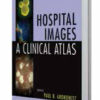Hospitalists Can Help Create the Future of Hospital Medicine
Two years ago, then-SHM President Eric Howell, MD, SFHM, challenged society members to recruit 1,000 medical students and residents to the hospitalist movement. Since then, SHM’s members have not only met that goal but continue to exceed it.
Today, the number of house staff continues to grow well beyond Dr. Howell’s original goal, and SHM offers even more programming with medical students and residents in mind.
The key to this success is twofold: the allure of a career in hospital medicine and the current generation of hospitalists who serve as a critical link to future hospitalists.
Brendon Shank is SHM’s associate vice president of communications.



